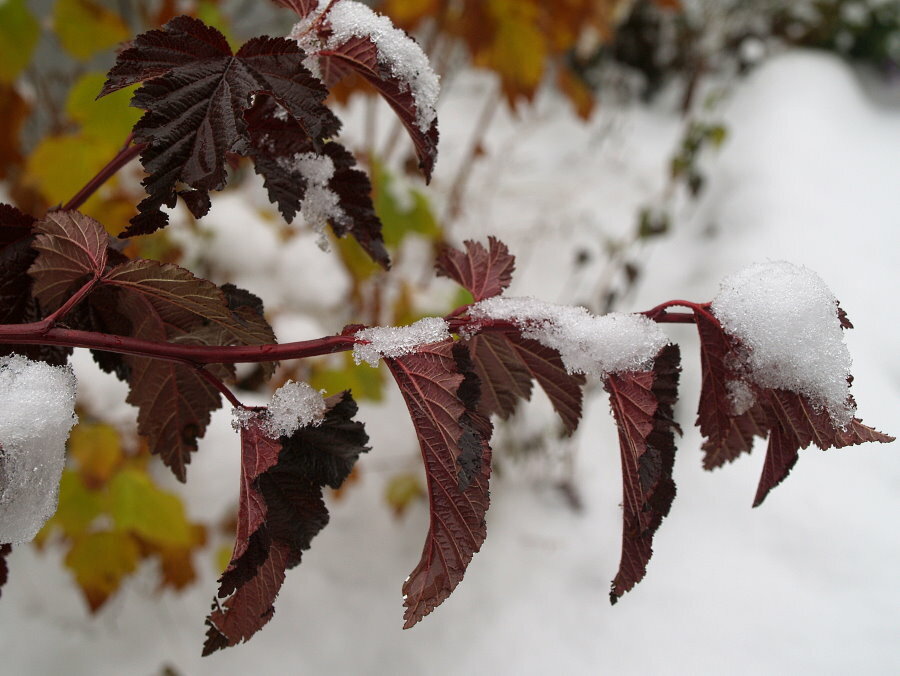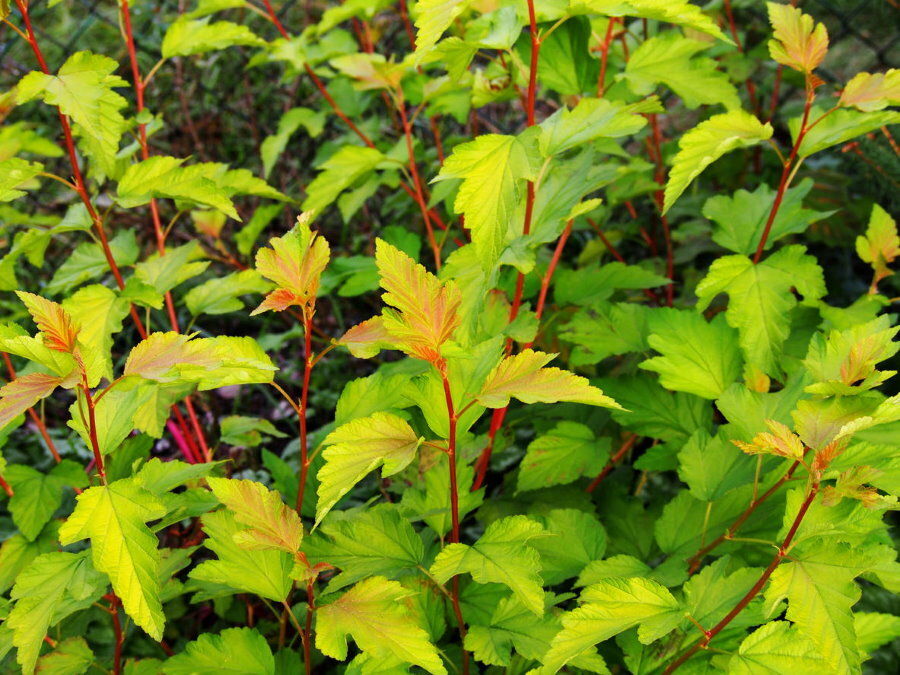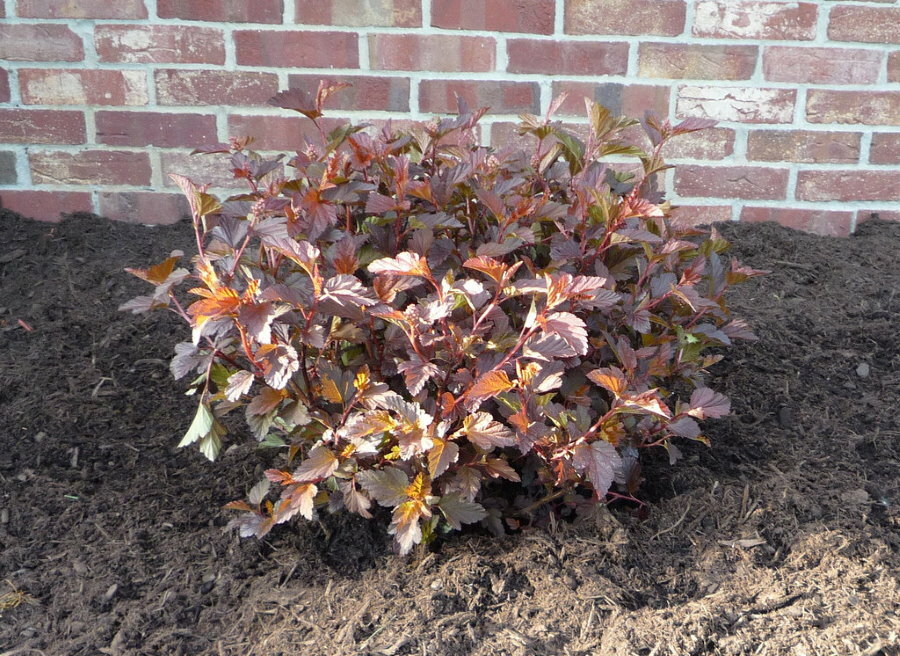A well-groomed suburban area will be decorated with a green fence, masking unsightly buildings, framing the paths. A good solution for zoning the territory would be a hedge made of a bubblegrowth, an unpretentious shrub that lends itself well to pruning. The plant grows well in temperate latitudes, forms a dense crown that changes color in autumn. A green fence creates additional protection from street dust and the noise of passing cars.

The shrub owes its name to the characteristic shape of the fruit.
Bubble garden in landscape design - a thick and beautiful fence
Content
- Bubble garden in landscape design - a thick and beautiful fence
- Pros and cons of bladder hedge
- Bladder varieties for hedges
- Vine-leaved
- Yellow
- Malvaceous
- How to propagate and plant a vesicle in a summer cottage
- Cutting a hedge from a bladder - photo examples
- Video: A beautiful hedge of a multi-colored vesicle
- Photo of a bicarp in the garden
A luxurious deciduous bush, a shrub of a deciduous type, looks very attractive in group plantings. Plantations with patterned leaf plates will decorate any landscape, emphasize the beauty of flower beds and conifers, and become successful fence of the courtyard, barbecue or recreation area, separation from the garden without violating the uniform style of the landscape design.

Bubbles can be planted next to other ornamental shrubs
The shrub is highly decorative from the second half of spring to late autumn. The bladder blooms from June to the end of August, small white or pale pink flowers form hemispherical caps of inflorescences. The dark green fruit pods have a pleasant burgundy or cherry hue. Leaves that turn yellow or turn red are especially good against a bleak autumn landscape.

Incredibly beautiful inflorescences with a pleasant aroma leave no one indifferent
Bubble plant in landscape design is good in mono-planting and two-stage hedges using tall and short varieties. The bushes are planted at a short distance from each other, the lower row compensates for the root sparseness of tall plants, a thick two-stage hedge is obtained along the entire height.

Two-stage hedge with a bubble in the background
Monochromatic hedges from varieties with colored sheet plates near lawns, facades of houses look very elegant. The texture creates a mixture of several varieties. A beautiful combination yields a golden green or lemon blister in combination with purple or purple varieties. Colored shrubs are planted in parallel in two rows or in a checkerboard pattern, alternating one variety of shrubs with another.

An attractive combination of different varieties of bladder tea in one hedge
The bushes change the color intensity depending on the light and soil moisture. Bright colors will fade, and leaves will turn greener in shady areas.

In a shady garden, bladder leaves are less decorative.
Pros and cons of bladder hedge
The popularity of culture in decorative design is explained by the specific features of the plant. Molded and freely growing types of hedges of various heights around the perimeter of the plot and inside the garden are created from the bladder. The crown quickly recovers after pruning, the bushiness of low-growing varieties is stimulated along the entire length of the shoots, the density of the bush is uniform along the entire length.

The bladder requires little maintenance, making it ideal for beginners
Breeders of the countries of Europe and Russia have bred bushes with yellow and red shades of leaves. Fruits of a spherical shape of a white or pinkish hue look very decorative. The culture has good growth rates, during the season the shoots grow up to 25 cm. The bush recovers quickly after pruning. Plants are not demanding on the composition of the soil, watering, feeding. Many varieties are resistant to scab, powdery mildew, and are not attacked by pests. The vesicle has good adaptability to various climatic conditions.

The leaves stay on the branches until winter and decorate the plant, even if it is dusted with snow.
There are few shortcomings, the bush does not grow well on alkaline soils, flooded areas. Growing conditions depend on the variety of the bush. Tall bushes eventually become bare in the lower part, the trunk becomes visible.
Bladder varieties for hedges
The shrub belongs to the Rosaceae family, 14 species are currently known. For decoration, gardeners use the varieties that are most resistant to climatic conditions.

In the photo, the Summer Wine bubblegum with spring wine-red leaves that turn green in summer
Vine-leaved
In total, there are more than 15 varieties, the viburnum bladder is distinguished by thin branches, drought resistance. The bush blooms in June-July, grows from 1.5 to 2.4 m. The beauty of the viburnum in landscape design in the photo can be appreciated.

On the bushes of these bladders, three or five-lobed leaves bloom, like a viburnum
The most popular varieties:
- Center Glow with variegated leaves: greenish-yellow center, burgundy border, orange in between.

Bubble-leaf Vine-leaved Center Glow
- Diablo with greenish-burgundy leaf plates.

Diablo ciliates
Yellow
Young leaves have a golden bright color, with growth the color fades. Main varieties:
- Luteus is tall, up to 3 meters, with oval leaves.

Bubble plant Luteus with yellow-green leaves
- The Nugget cultivar reaches 2 meters in height, the leaf plates are carved, with dark veins.

Bubble tree Nugget with carved leaves
- Dart's Gold - two meters high, leaves are large, in autumn it becomes reddish.

Dart's Gold variety changes color of leaves during the season
Malvaceous
A tall, early flowering hybrid of a red-burgundy hue, forms a crown with a diameter of 4 m.

Malvia bubble grows up to 3 m, blooms in May, bears fruit in September
Green varieties develop well in shade, partial shade, form a dense bush.
How to propagate and plant a vesicle in a summer cottage
With the difference in the description of the bladder shrub in the photo, it can be seen that it is propagated and grown in the same way. To form hedges, the plant is propagated in two ways by layering and cuttings.
Layers are formed by folding back the lower whitewash, sprinkling them with earth. When shoots appear from the mound, the young seedling is separated from the mother bush, transferred to a permanent place. Young cut shoots take root well in moist soil. Before planting, all leaves are removed from the stem, except for the apical ones, planted in a hole up to 15 cm deep, covered with nutritious soil, watered. For 2 weeks while the roots are forming, it is important to maintain constant moisture.

Propagation of the vesicle by layering
For cuttings, 2-year branches are selected, the shoot is cut into fragments so that each has 2 or 3 buds. Until the roots form, the cuttings are kept in a solution of a growth stimulator or immediately buried in the soil layer, creating tropical conditions: high humidity and temperatures up to + 27 ° C.
When buying ready-made seedlings, the roots are checked, damaged parts are removed with a clean pruner or knife.
The seedlings are transferred to a permanent place in early spring. You can plant hedge bushes in trenches up to 50 cm deep in 40-60 cm increments, depending on the diameter of the crown. With a two-row dense planting, an inter-row distance of 60 cm to a meter is observed. The "checkerboard" pattern is formed, maintaining an interval of 40-60 cm in each row.

After planting, the bushes of the bladder should be watered abundantly with water, and then the trunk circle should be mulched
Drainage is laid at the bottom of the trench, nutritious soil is prepared by mixing the soil with mineral complex fertilizers. With top dressing, plantings take root faster, give a good increase in the first year. The soil of the plants is crushed so that there are no voids at the roots.
To retain moisture, well-watered plantings are mulched with humus or high-moor peat.
Cutting a hedge from a bladder - photo examples
Shearing and pruning is done after 4 years of growth. At one time, remove up to 20% of the green mass. Lateral branches are cut 10-15 cm. Shoots, if necessary, are shortened up to 5 times per season. From a low-growing vesicle, hedges of rectangular cross-section or with a rounded top are formed. A clipped hedge forms a powerful root system.

The tall bush can be used as a tapeworm that protects the resting corner from the scorching sun

A hedge from a bubblegrowth with dark foliage looks beautiful against the background of a light fence
Stepped hedges form different heights, the minimum is 15 cm. You can safely cut the young growth under the stump in early spring. New shoots grow during the season. The next formative pruning on such shrubs is carried out in a year.

Live walls and borders of various heights and shapes can be created from the bladder

Rows of vesicles with a spherical crown shape
It is possible to form fantasy shapes from the vesicle, alternate straight spans with semicircular columns, create rows of balls of different diameters in parquet lawns. The rows of columns look beautiful, it is possible to pass between the bushes.
Video: A beautiful hedge of a multi-colored vesicle
Photo of a bicarp in the garden




